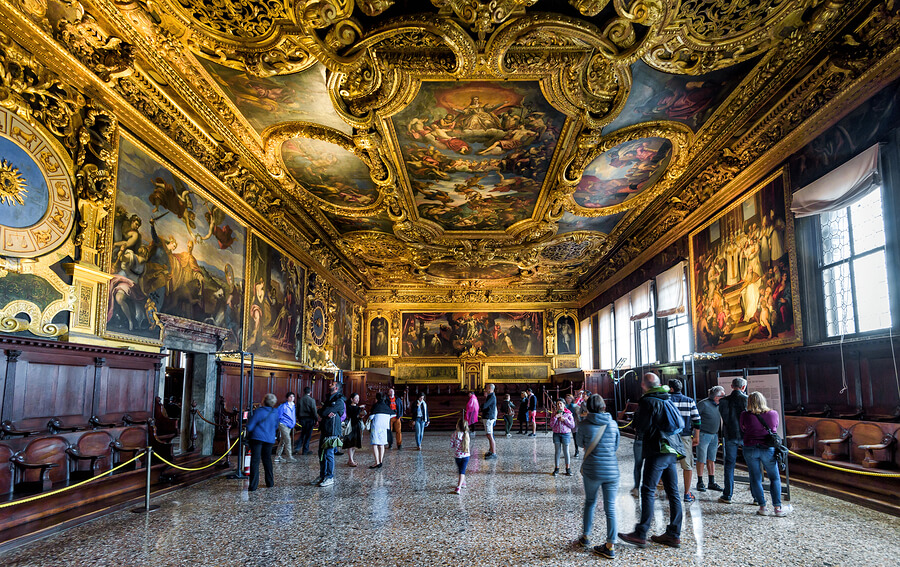Venice, known as “La Serenissima,” stands as one of the most remarkable and unique cities in the world. Its history is a rich tapestry woven with tales of trade, conquest, art, and resilience. This article delves into the fascinating story of Venice, from its early beginnings to its rise as a powerful maritime republic and its enduring legacy.
Origins and Early Settlement
The origins of Venice trace back to the 5th century AD, during the decline of the Western Roman Empire. As barbarian invasions swept through the Italian mainland, refugees sought safety in the marshy lagoons of the Adriatic Sea. These early settlers, primarily from nearby Roman towns such as Aquileia and Altinum, built their homes on the scattered islands, laying the foundations for what would become Venice.
The Formation of the Venetian Republic
By the 8th century, Venice had established itself as a significant community. In 726 AD, the Venetians elected their first doge, or leader, marking the beginning of the Venetian Republic. This unique political system, combining elements of a republic and an oligarchy, would endure for over a thousand years. The doge was not an absolute ruler but rather a figurehead, with power distributed among various councils and governing bodies.
The Rise of a Maritime Power
Venice’s strategic location in the Adriatic Sea made it a natural hub for trade between the East and West. The city quickly became a vital link in the trade routes connecting Europe with the Byzantine Empire and the Islamic world. By the 11th century, Venice had established itself as a dominant maritime power, with a fleet that controlled the Mediterranean’s shipping lanes.
The Fourth Crusade (1202-1204) marked a turning point in Venetian history. Originally intended to recapture Jerusalem, the crusade was diverted to Constantinople at the behest of Venetian leaders. The sacking of Constantinople in 1204 enriched Venice immensely and gave the city control over key territories in the Eastern Mediterranean, including Crete and parts of the Dalmatian coast.
Cultural and Artistic Flourishing
The wealth generated by trade and conquest fueled a remarkable period of cultural and artistic flourishing in Venice. The city became a center for the arts, attracting renowned painters, architects, and musicians. Venetian Gothic architecture, characterized by its intricate detailing and unique blend of Eastern and Western influences, became a hallmark of the city.
One of the most iconic symbols of Venetian art and culture is the Basilica di San Marco. Constructed in the 11th century, this stunning cathedral reflects the city’s Byzantine connections with its lavish mosaics and domed architecture. The Venetian School of painting, with masters like Titian, Tintoretto, and Veronese, left an indelible mark on the art world, pushing the boundaries of color and composition.
The Decline of the Republic
The Venetian Republic reached its zenith in the 15th and 16th centuries but began to decline thereafter. The discovery of new trade routes to Asia via the Cape of Good Hope diminished Venice’s control over the lucrative spice trade. Additionally, rising competition from other European powers, such as Portugal and Spain, eroded Venice’s dominance in the Mediterranean.
The Republic faced further challenges with the rise of the Ottoman Empire, which steadily encroached upon Venetian territories in the Eastern Mediterranean. Despite these setbacks, Venice remained a significant political and economic force until the late 18th century.
The Fall of the Republic and Modern Era
The fall of the Venetian Republic came in 1797 when Napoleon Bonaparte’s forces invaded the city. Venice was ceded to Austria, marking the end of over a millennium of independence. The city changed hands several times in the following decades, ultimately becoming part of the Kingdom of Italy in 1866.
Today, Venice faces new challenges, including rising sea levels and the impact of mass tourism. Yet, the city’s enduring charm and historical significance continue to captivate visitors from around the world. The annual Carnival of Venice, with its elaborate masks and costumes, harks back to the city’s rich cultural heritage, while efforts to preserve its architectural treasures ensure that Venice’s legacy remains alive for future generations.
Conclusion
Venice’s history is a testament to human ingenuity, resilience, and the enduring power of cultural exchange. From its humble beginnings as a refuge from barbarian invasions to its rise as a global maritime power, Venice has left an indelible mark on history. Despite the challenges it faces today, the spirit of Venice continues to inspire and enchant, a living reminder of the city’s glorious past.

